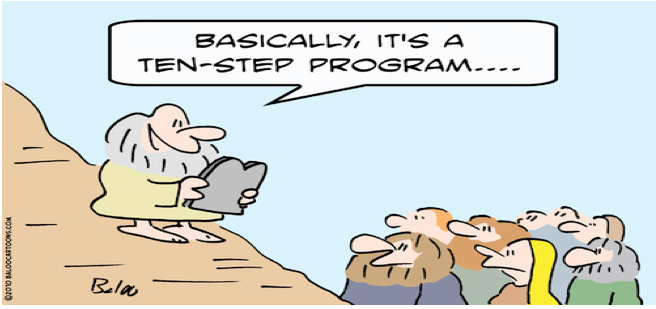CommentsPLATKIN ON PLANNING-As a former Los Angeles City Planner who was part of the team that prepared the General Plan Framework element, I offer an alternative work program with ten basic steps to properly update LA’s General Plan. If followed, it would reliably prepare, adopt, implement, and monitor the City’s General Plan according to State of California law and regulations, as well as professional city planning standards.
My alternative work program is based on two assumptions:
First, the “no money” claim for avoiding this important work is pure bunk. For example, only last week the City Council unanimously voted in favor of $200 million in subsidies and fee waivers for a new downtown hotel. This is obviously a great deal of money, but still much less than the $519 million that former LA City Councilmember Jan Perry boasted about in her efforts to financially support companies like AEG through City Council largess.
Second, the purpose of updating, implementing, and monitoring LA’s General Plan is to improve the overall quality of life in Los Angeles, not to facilitate real estate speculation or reduce public health and safety to policing.
Step 1 - Demographics: The first step is to produce accurate citywide neighborhood demographic forecasts. This is because Los Angeles relies on the Southern California Association of Governments (SCAG) and its inflated demographic projections for Los Angeles, especially the Hollywood Community Plan Update. These exaggerated forecasts resulted in Superior Court Judge Alan Goodman’s 2013 total rejection of the Hollywood plan’s text, EIR, zone changes, height district changes, and General Plan amendments. Furthermore, SCAG’s previous demographic forecasts for the General Plan Framework were 500,000 people too high for the element’s 2010 horizon year.Since this blunder, City officials have not yet bothered to investigate why this citywide forecast was so inflated. As for SCAG, its only explanation was an in-house paper that blamed its erroneous numbers on a failure to consider the business cycle, including the Great Recession, in its demographic methodology.
Step 2 - Monitoring: Next, City Planning needs to establish the General Plan Monitoring Unit required by the Framework. Its tasks include accurate periodic measurements of employment, housing, population, infrastructure (maintenance, capacity, and user need), zoning buildout, and plan implementation. Without this information, it is impossible to know if or when existing or future plans perform as intended or require mid-course corrections.
Step 3 - Re:code LA: City Planning should also freeze the current re:code LA rezoning program since the City of Los Angeles should not legally change the zone for every piece of property in Los Angeles before it updates its General Plan elements. General Plan implementation, such as zoning, should follow, not precede, the update of the entire General Plan.
Step 4 - Update all General Plan Elements: After these steps, City Planning should address the six citywide, non-Land Use elements that the State of California legally requires, beginning with the four oldest ones: Conservation, Open Space, Public Safety, and Noise. The remaining two citywide elements that are up-to-date, Housing and Mobility, must then be amended to assure consistency with the updates of the other General Plan elements.
Step 5 - Update Existing Optional Elements: The next step is to review and update existing optional elements to make sure that they, too, become fully consistent with the mandatory elements. The General Plan Framework and Air Quality elements are the most high profile, but older optional elements should also be included, especially Service Systems and Infrastructure, which are now celebrating their 50th birthday.
Step 6 - New Optional Elements: After that, City Planning should prepare two new optional elements that many California cities have already pursued: Climate Change and Economic Development. The Governor’s Office for Research and Planning has already prepared extensive guidelines for these optional elements.
Step 7 - Update Community Plans: Then, with those previous six steps concluded, City Planning should address the Land Use element, more specifically LA’s 35 Community Plans and two District Plans. The city’s current proposal, to update the Community Plan elements before City Planning updates the citywide General Plan elements, is clearly out-of-sequence. This is because it is impossible to accurately update local plans without fully understanding citywide trends in Los Angeles related to infrastructure, services, zoning capacity, and demographic trends.
Step 8 - Local Zone Changes: With this process well underway, City Planning should determine what local zoning should be changed as a result of a properly sequenced planning process. To undertake these comprehensive zone changes first, which is the City of LA’s current approach through re:code LA, is also obviously out-of-sequence.
Step 9 - Infrastructure Spending: Like all other California cities, Los Angeles has a five year Capital Improvement Program (CIP). The CIP lists all proposed public improvements, and the City Planning Commission is charged with confirming that these infrastructure investments faithfully implement the policies of the General Plan. This never happens, and it must become one of the CPC’s major recurring tasks.
Step 10 - Annual Monitoring Reports: Finally, with these nine work program steps completed, the General Plan Monitoring Unit must prepare thorough annual reports that measure housing, employment, and population changes, and then recommend how these data should result in amendments to the General Plan's various elements, as well as all implementing programs.
It is many years since the City of Los Angeles has taken on even some of this work program, but the necessity, expertise, and potential financial resources are all available. As already directed by the City Council in its April 14, 2016, resolution, let’s get this process underway.
(Dick Platkin reports on city planning issues in Los Angeles for CityWatch. He is a former LA City Planner and current advocate planner. He welcomes comments and corrections at [email protected].) Prepped for CityWatch by Linda Abrams.
Explore
Our mission is to promote and facilitate civic engagement and neighborhood empowerment, and to hold area government and its politicians accountable.

 CityWatch Los Angeles
Politics. Perspective. Participation.
CityWatch Los Angeles
Politics. Perspective. Participation.
13
Tue, May















